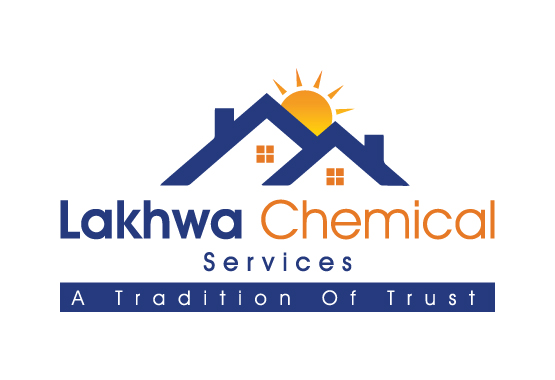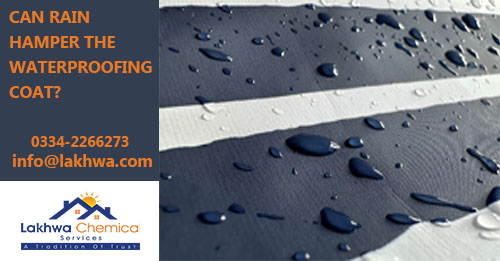Can Rain Hamper the Waterproofing Coat?
There are several environmental factors (ambient temperature, air flow, humidity, substrate temperature, and rain) that can affect a water-repellant surface (waterproof coating or membrane). These coatings are available in single-pack, water-based or solvent-based; ensure that you select the appropriate one. Or, if you have time constraints or hectic schedules to follow, contact Lakhwa Chemical Services.
Waterproofing layers prevent damage and seepage caused by moisture. The process is utilized in various industries, such as construction, roofing, and infrastructure projects. The effectiveness of waterproofing coats can be compromised by external factors, with rain being a significant concern. In this blog, we will learn the effects of rain, and how it can hamper the waterproofed layers.
Vulnerability of Fresh Waterproofing Coats
When newly applied, waterproofing coats take their time to cure. The liquid version transforms into a solid state, reinforcing the substrate layer for years to come. However, rain can disrupt the curing process by washing away the uncured coating material or causing uneven drying, leading to weakened areas susceptible to water infiltration.
So, it is optimal to verify the inclement weather conditions before commencing the waterproofing process.
Read More
What is the Best Time for Waterproofing?
Which is the Best Waterproofing Material for Interior Walls?
What are the Three Types of Basement Waterproofing?
Impact on Adhesion
Rainwater can affect the adhesion quality of the waterproofing coat. If it comes in contact with the coating before it has fully adhered to the surface, it may interfere with the bond between the coat and the substrate. This compromised adhesion can lead to peeling, cracking, or delamination of the waterproofing layer in quick time.
Reduced Thickness and Performance
As stated before, continuous exposure to rain can erode the fresh coating and reduce its thickness and performance, making it less capable of withstanding water exposure and increasing the likelihood of water seepage.
Potential for Water Trapping
In some cases, rain can create an adverse effect by getting trapped between the substrate and the fresh waterproofing coat. This process can lead to the formation of bubbles or blisters within the coating and compromise the effectiveness altogether. In addition, it will create vulnerable spots through which water can infiltrate.
Measures to Protect Waterproofing Coats from Rain
While rain poses a serious threat to waterproofing layers, several measures can be taken to protect them:
Timing of Application
Planning is a critical factor in applying waterproofing coats to a surface. Ensure that your knowledge and information is sound and precise, especially on weather forecasts. Or, contact experts from Lakhwa Chemical Services for optimal outcomes.
Sheltering & Tarping
In case of unexpected rain during the application process, temporary shelter or tarping can shield the fresh coating from direct exposure to rainwater. This prevents the material from being washed away or damaged.
Read More
Is Bitumen Good for Waterproofing?
Environmental Conditions to Consider While Installing a Waterproofing Membrane
How Popular is Roof Cool Services in Pakistan?
Extension in Curing Time
To allow time for the curing process is necessary, especially if the weather is overcast or winds are slow. The coating needs more time to gel and stabilize.
Quality Assurance
Hiring experienced and skilled applicators is necessary; they can manage the task in due time. Properly trained professionals can ensure that the coating adheres to the substrate and is not compromised with rainfall.
Regular Inspections
Periodic checking can help identify any potential damage or areas that need touch-ups. This proactive approach can maintain the integrity of the waterproofing system for extended periods.
Conclusion
Freshly applied sheet or membrane coatings can be hampered due to rain, the consequences of which, are detrimental and damaging to the structure. The curing process, if attacked by moisture, can lose the adhesiveness it carries and form blisters after the process finalizes. However, with proper planning, timing, and application techniques, these challenges can be mitigated effectively.
For any waterproofing project, it is crucial to follow the best practices, work with experienced professionals, and consider weather conditions during the application and curing stages. Contact Lakhwa Chemical Services for optimal results.




Leave a Reply
Want to join the discussion?Feel free to contribute!